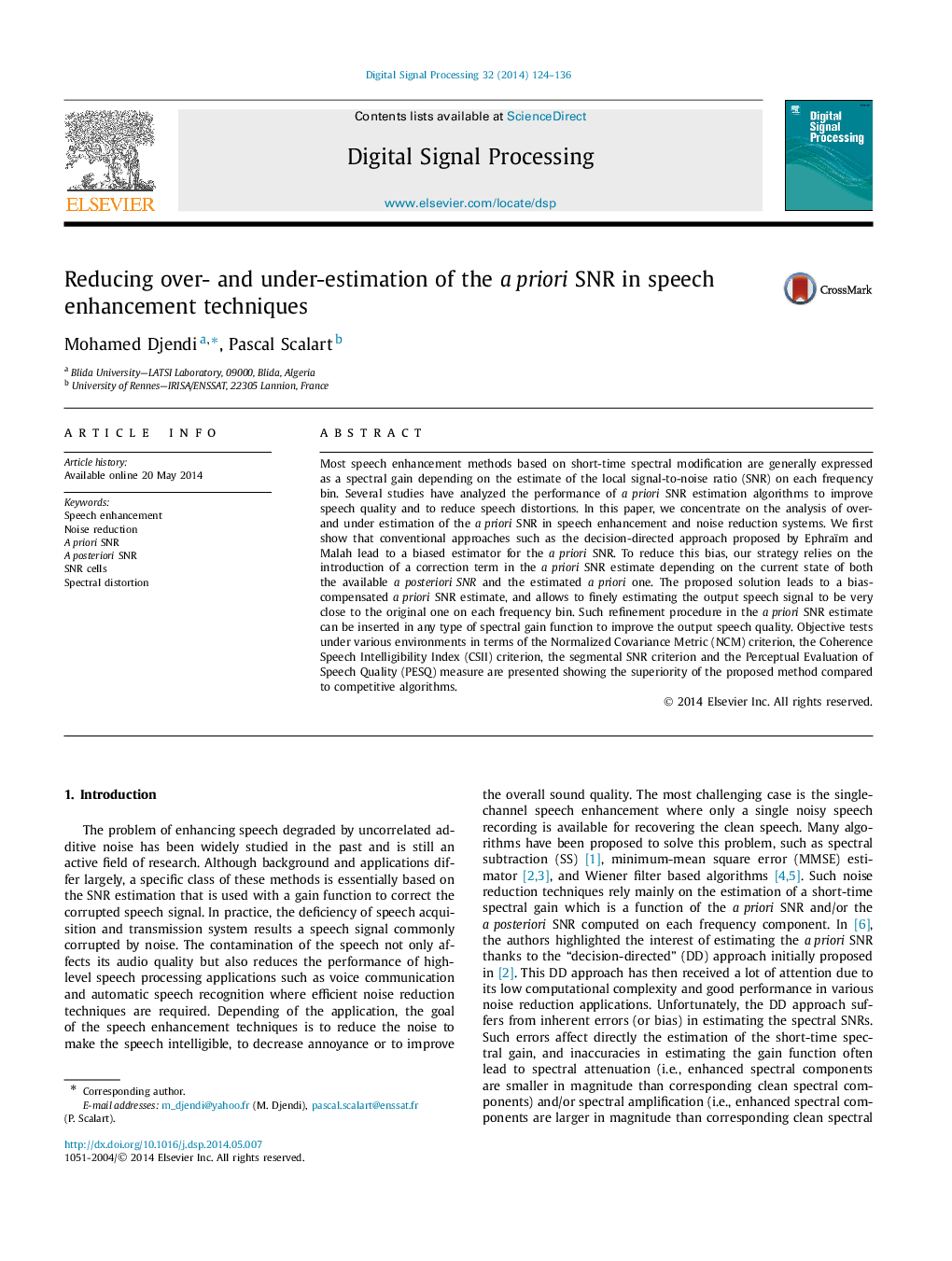| کد مقاله | کد نشریه | سال انتشار | مقاله انگلیسی | نسخه تمام متن |
|---|---|---|---|---|
| 558754 | 1451748 | 2014 | 13 صفحه PDF | دانلود رایگان |

• We propose a novel approach based on two steps, training and correction of a priori SNR.
• We have applied this proposed approach to the DD and the TS-NR algorithms.
• This new approach has given two new algorithms for noise reduction and speech enhancement.
• The new algorithms are based on a bias-compensated of the a priori SNR estimate.
• Intensive experiments have shown the efficiency of the proposed algorithms and approach.
Most speech enhancement methods based on short-time spectral modification are generally expressed as a spectral gain depending on the estimate of the local signal-to-noise ratio (SNR) on each frequency bin. Several studies have analyzed the performance of a priori SNR estimation algorithms to improve speech quality and to reduce speech distortions. In this paper, we concentrate on the analysis of over- and under estimation of the a priori SNR in speech enhancement and noise reduction systems. We first show that conventional approaches such as the decision-directed approach proposed by Ephraïm and Malah lead to a biased estimator for the a priori SNR. To reduce this bias, our strategy relies on the introduction of a correction term in the a priori SNR estimate depending on the current state of both the available a posteriori SNR and the estimated a priori one. The proposed solution leads to a bias-compensated a priori SNR estimate, and allows to finely estimating the output speech signal to be very close to the original one on each frequency bin. Such refinement procedure in the a priori SNR estimate can be inserted in any type of spectral gain function to improve the output speech quality. Objective tests under various environments in terms of the Normalized Covariance Metric (NCM) criterion, the Coherence Speech Intelligibility Index (CSII) criterion, the segmental SNR criterion and the Perceptual Evaluation of Speech Quality (PESQ) measure are presented showing the superiority of the proposed method compared to competitive algorithms.
Figure optionsDownload as PowerPoint slide
Journal: Digital Signal Processing - Volume 32, September 2014, Pages 124–136